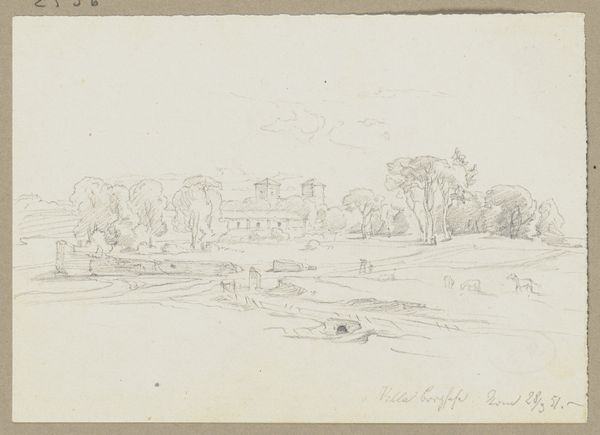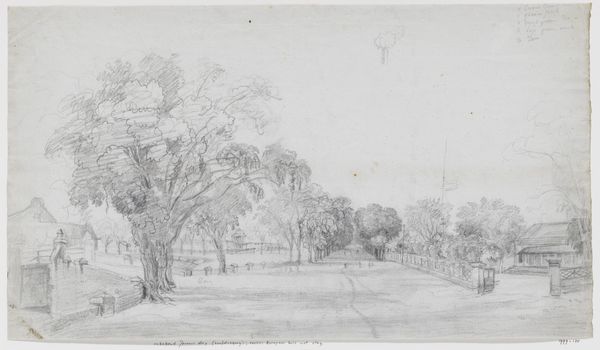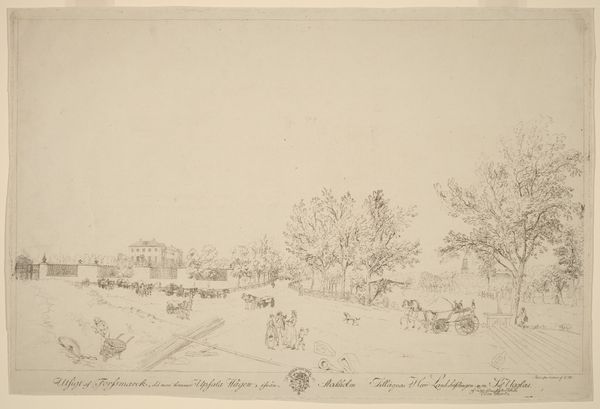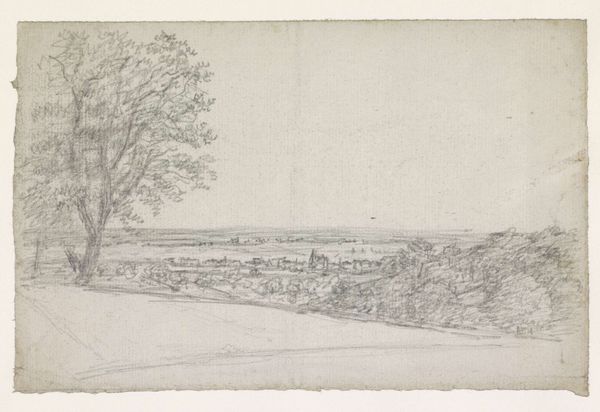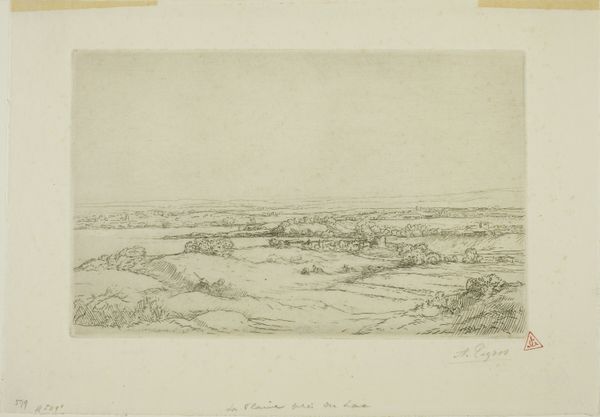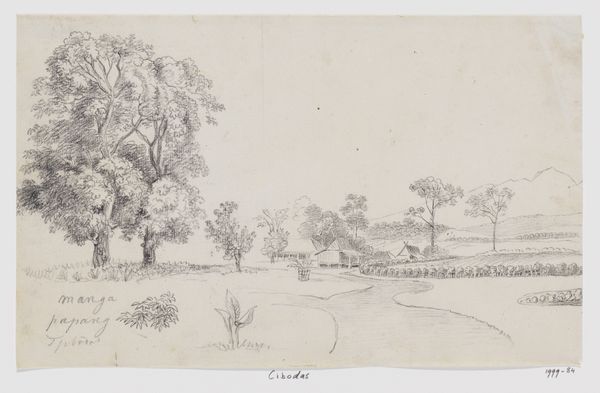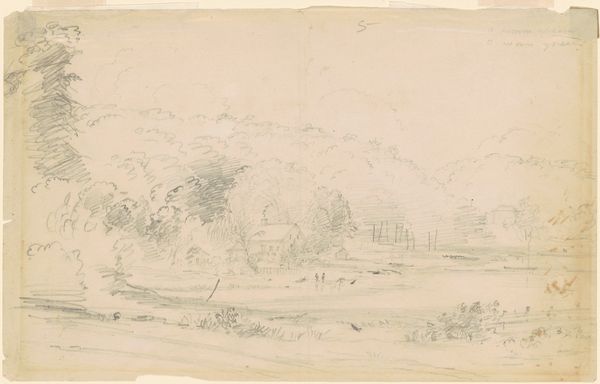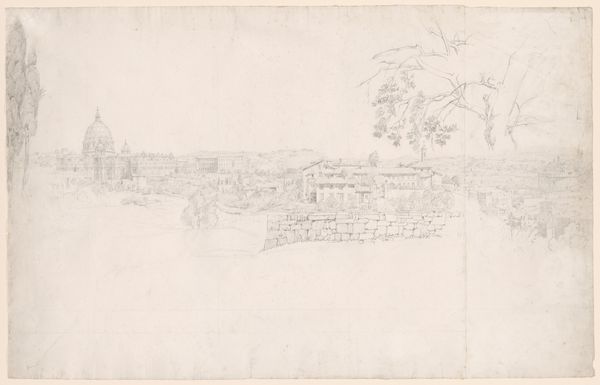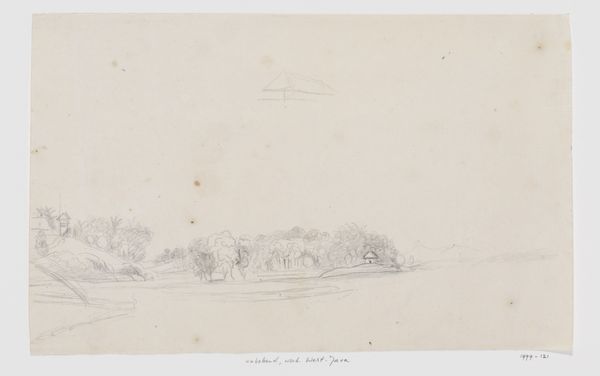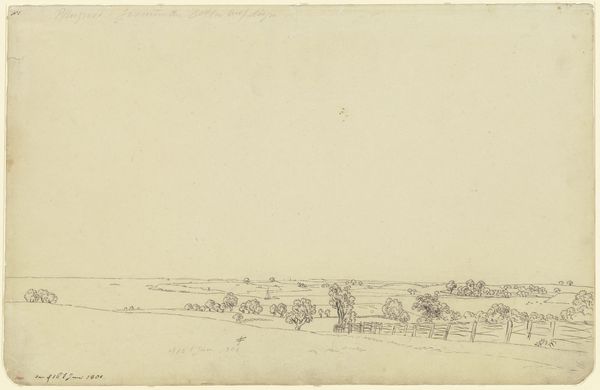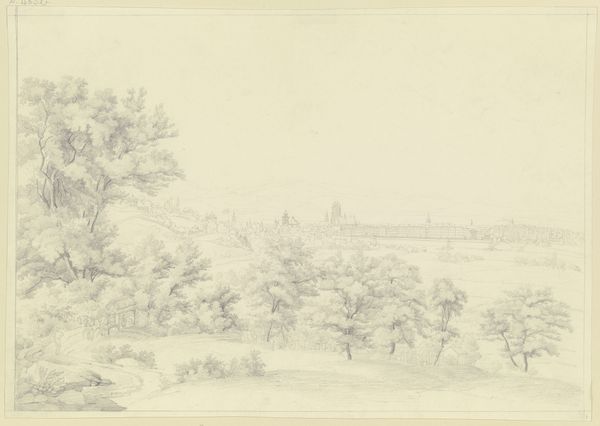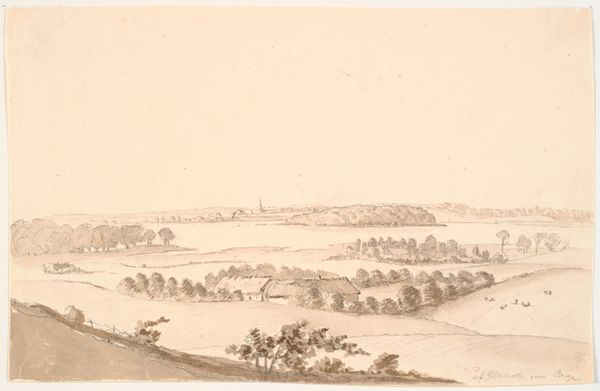
Gezicht op de tuin en het land tot aan de Salak vanuit de achterzijde van het paleis Buitenzorg (Bogor), West-Java c. 1816 - 1846
0:00
0:00
drawing, pencil
#
pencil drawn
#
drawing
#
pencil sketch
#
landscape
#
pencil
#
botanical art
Dimensions: height 190 mm, width 544 mm
Copyright: Rijks Museum: Open Domain
Curator: What a delicate whisper of a scene! It feels like holding a fading memory. Editor: It is quite ethereal, isn’t it? This pencil drawing, created sometime between 1816 and 1846, is titled "Gezicht op de tuin en het land tot aan de Salak vanuit de achterzijde van het paleis Buitenzorg (Bogor), West-Java," by Adrianus Johannes Bik. Currently, it resides in the Rijksmuseum. Curator: Just the title alone transports me! It's funny, you know? For a simple landscape sketch, it speaks volumes about colonial encounters and the way Europeans romanticized distant lands. One can almost imagine the artist sketching away, back straight as a board in the tropical heat. Editor: I find myself thinking about the labor involved in both the physical creation of the work, sourcing the paper, refining the pencil, and the larger socio-economic context that allowed someone like Bik to even be there, recording this view. Was this landscape made for personal study, or a preparatory piece, or even for colonial administration and circulation? It feels deeply connected to systems of power, extraction, and the artistic process itself, wouldn’t you agree? Curator: Oh, absolutely. You can practically feel the weight of expectation and "civilizing missions" just radiating off the page. But, even with all that historical baggage, there’s something disarmingly vulnerable about its tentative lines and pale shading. There’s almost a feeling of uncertainty embedded within. The botanical rendering of plant life offers some vibrancy, however, hinting at a celebration of the beauty that attracted him to the region in the first place. Editor: It highlights how intertwined those two motivations were, observation and exploitation. That interplay of personal and political, artistic intention and global forces— it creates a rich tapestry, or, maybe in this case, a delicate sketch. Curator: Yes! Exactly. The fragility reminds me of old photographs capturing what can never be entirely known again. There’s a real poignancy. Editor: It prompts a consideration of value: artistic, historical, material… Whose perspective shapes what we choose to remember, and how we interpret what’s left behind? Curator: Right. Now, that’s something to ponder long after we’ve moved onto the next exhibit.
Comments
No comments
Be the first to comment and join the conversation on the ultimate creative platform.

